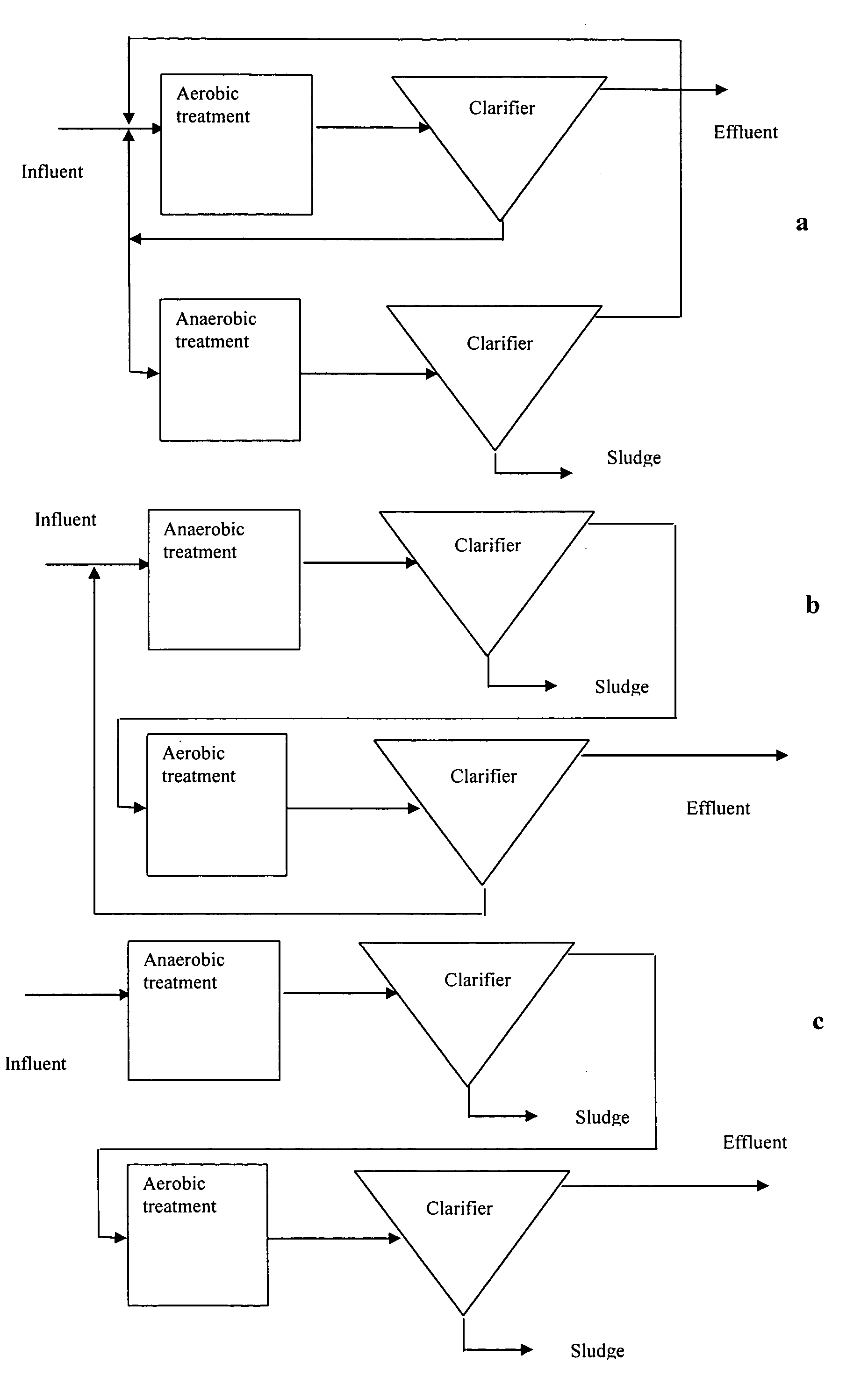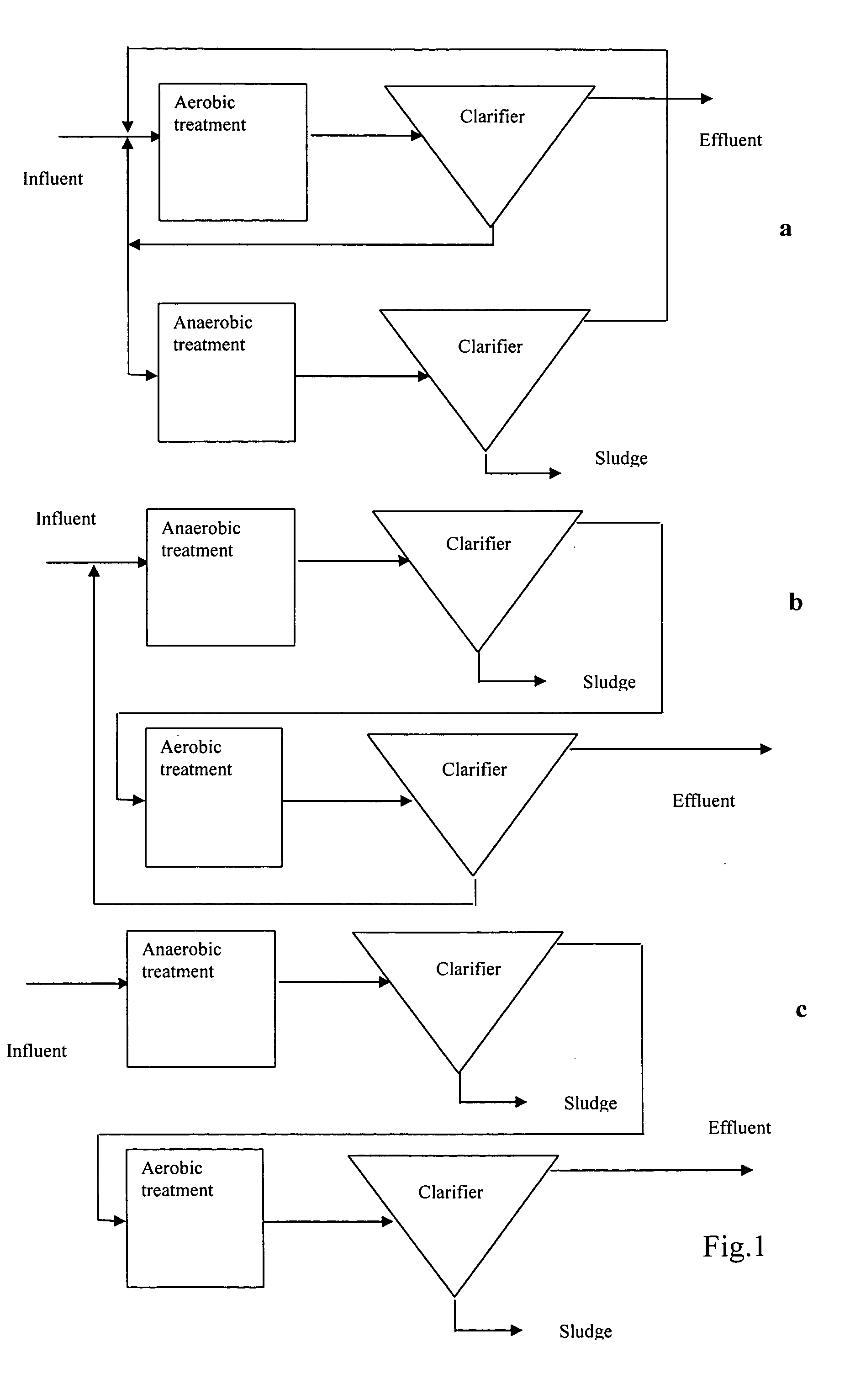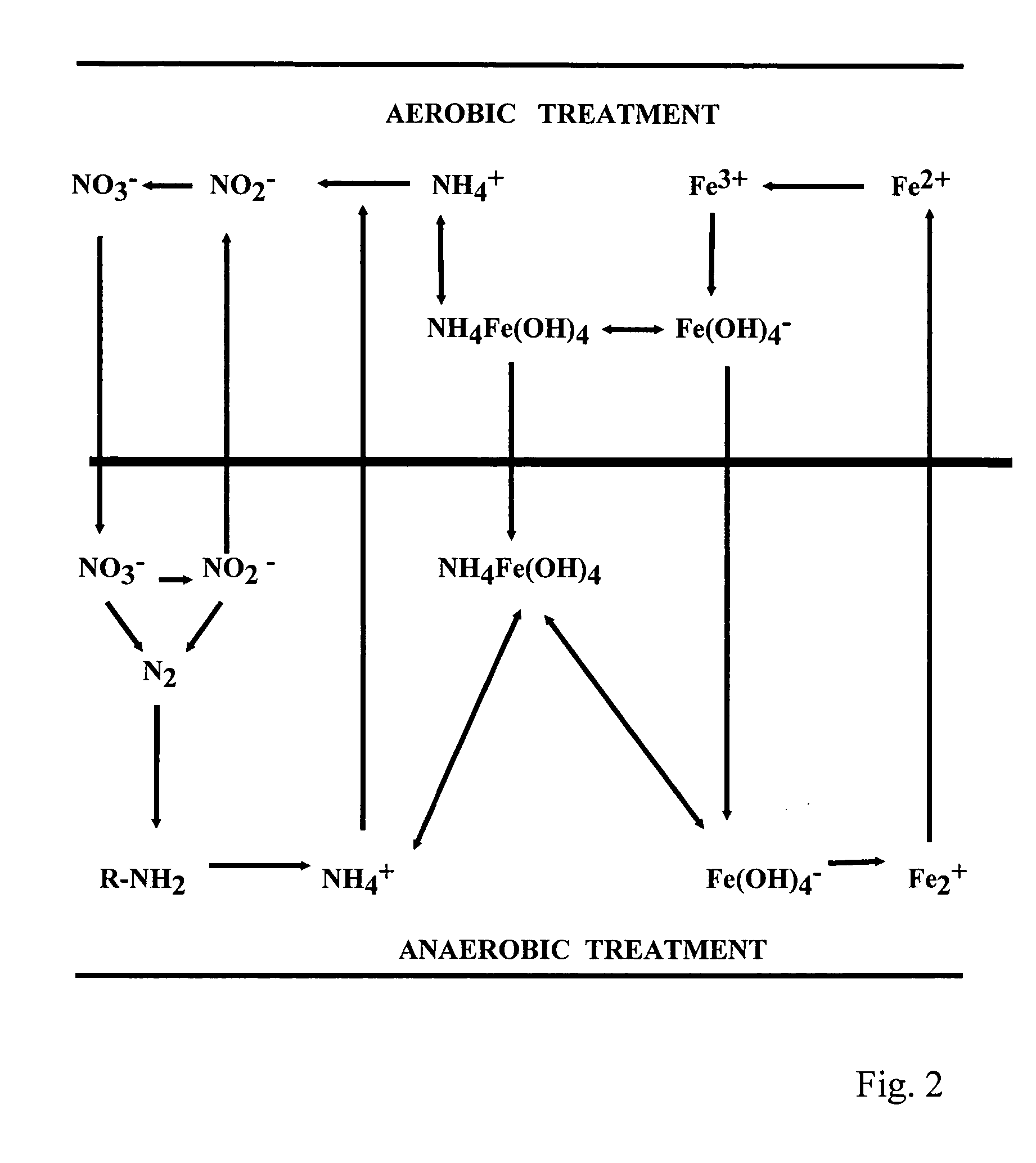Compositions and methods for the treatment of wastewater and other waste
a technology for wastewater and other waste, which is applied in the direction of water treatment compounds, water/sludge/sewage treatment, water treatment parameter control, etc., can solve the problems of inability to break down sulfate, poor degradation of lipids, common components of municipal and food processing wastewater, and solid food waste under both aerobic and aerobic conditions, so as to enhance anaerobic treatment, reduce the start-up period, and improve the effect of aerobic treatmen
- Summary
- Abstract
- Description
- Claims
- Application Information
AI Technical Summary
Benefits of technology
Problems solved by technology
Method used
Image
Examples
example 1
The Combined Anaerobic-Aerobic Treatment of Polluted Wastewater
[0079] Sequential anaerobic-aerobic wastewater treatments with and without an iron as an added redox mediator species were performed to compare the relative efficiency of each method in the treatment of wastewater. Experiments performed in the presence of added iron were inoculated with enriched cultures of iron-reducing and iron-oxidizing bacteria.
[0080] Anaerobic batch-processing was performed at 55° C. in 2 L and 5 L glass reactors which were placed in incubator. Anaerobic batch processing (initial pH 7.5) was initiated via inoculation of 20% v / v of the sludge from a municipal anaerobic digester. Effluent produced by anaerobic treatment steps was centrifuged and subsequently used for moderate-temperature aerobic processing after inoculation by 10% v / v of the activated aerobic sludge from a municipal wastewater treatment facility. The parameters of wastewater treatment were determined by Standard Methods for the Exam...
example 2
The Effects of Additional Iron Salts on Anaerobic Fermentation of Lipid-Rich Wastewater
[0091] The utility of adding iron to anaerobic treatment of lipid-rich wastewater was examined. Experiments were performed to compare anaerobic fermentation between inoculum and ferrous oleate (experimental sample); inoculum only (control 1) and inoculum with sodium oleate (control 2).
[0092] The results of this study are shown in Table 5. The addition of iron salts in the form of ferrous oleate caused a significant increase in gas production.
[0093] The increased gas production was a consequence of the presence of ferrous oleate, which supports the growth of methanogenic bacteria. These methanogens use ferrous oleate as a substrate for methanogenesis (Tables 5 and 6). The sodium oleate which was added in control 2 is soluble and is not a significant substrate for methanogenesis, hence, does not support the growth of methanogens.
TABLE 5Cumulative production of gas during anaerobicdigestion of l...
example 3
Comparative Profiles of Different Iron Sources in the Anaerobic Treatment of Wastewater
Comparative Reduction Rates of Different Forms of Iron
[0095] Iron(III) reduction rates following the addition of either iron hydroxide, iron ore or iron-containing clay were measured.
[0096] The average rate of iron(II) production from iron(III) by anaerobic sludge which was not inoculated with iron-reducing bacteria was 10 mg Fe(II) / L / day for iron hydroxide, 2.5 mg Fe(II) / L / day for iron ore, 5 mg Fe(II) / L / day for iron-containing clay (Table 7).
TABLE 7Comparative reduction rates for different ironsources in inoculated and non-inoculated sludgeReduction Rate,Reduction rate,Non-InoculatedInoculatedSource of IronSludge (L / day)Sludge (L / day)Iron hydroxide1025Iron ore2.59Iron-containing clay519
Effect of Iron and Iron-Reducing Bacteria on Start-Up and Reductive Reaction Rates
[0097] The use of inoculated anaerobic sludge (i.e. enriched with iron-reducing bacteria) decreased the start-up period of ...
PUM
 Login to View More
Login to View More Abstract
Description
Claims
Application Information
 Login to View More
Login to View More - R&D
- Intellectual Property
- Life Sciences
- Materials
- Tech Scout
- Unparalleled Data Quality
- Higher Quality Content
- 60% Fewer Hallucinations
Browse by: Latest US Patents, China's latest patents, Technical Efficacy Thesaurus, Application Domain, Technology Topic, Popular Technical Reports.
© 2025 PatSnap. All rights reserved.Legal|Privacy policy|Modern Slavery Act Transparency Statement|Sitemap|About US| Contact US: help@patsnap.com



